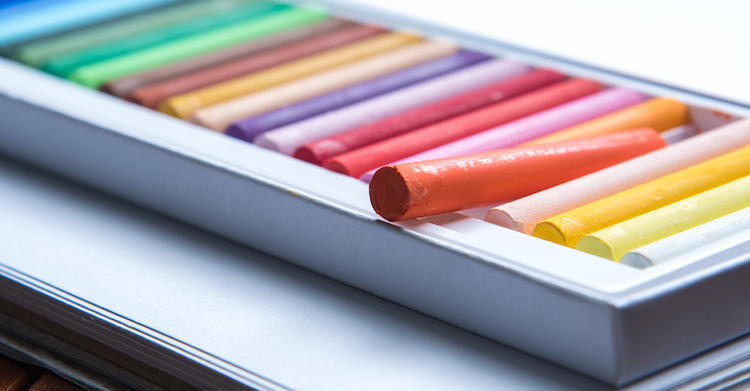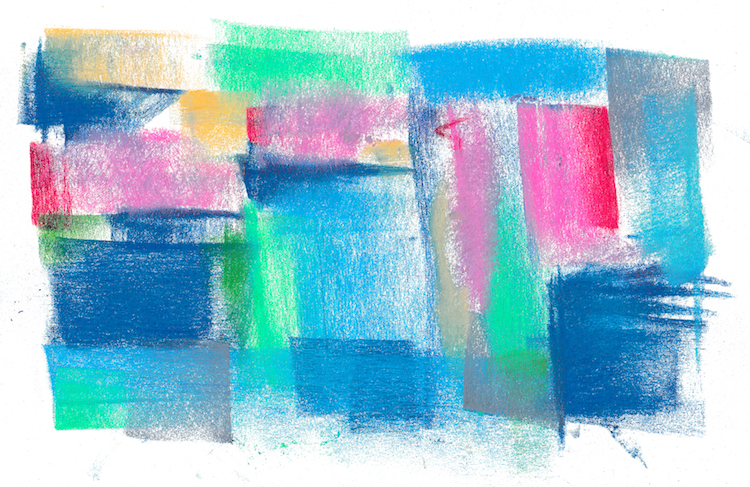The Difference Between Soft and Oil Pastels
The difference between soft and oil pastels is primarily in the binder used. This gives them two totally distinct properties with their own creative possibilities.

Photo: Oil pastels from Littlewitz / Shutterstock
Soft Pastels
Soft pastels, also called chalk pastels, are the most commonly used pastels. They often comprise a combination of pigment and gum arabic for the binder—which gives them a dry matte finish with a softer hue. The most important thing to note about soft pastels is that they don’t fully adhere to the surface of the paper. If you shake your paper hard enough, it will be brushed off (like chalk dust).
Interested in trying them? These are highly-rated sets: Rembrandt 30-piece soft pastels; Sargent 144-piece colored square pastels; Faber-Castel 48-piece soft pastel set.
Oil Pastels
Oil pastels are the closest you’ll get to oil painting. They are made similar to oil paints and have some of the same properties. These types of pastels don’t harden or dry out, and they retain their waxy consistency with vibrant hues. They also respond to materials like oils that will thin and make them look like paint.
Interested in trying them? These are highly-rated sets: Holbein Artists 40-color oil pastel set and PRO ART oil pastel 36-piece set
Other Pastels
Do neither of these types of pastels piques your interest? You might like water-soluble pastels. As the name implies, their pigments react to water and produce a watercolor-like effect. Give the Caran d’Ache Classic Neocolor 15-color set a try.

Photo: Soft pastels on paper from Kostiantyn Kravchenko / Shutterstock
What Type of Paper to Use for Pastels
Wondering what type of paper to use for pastels? Selecting paper to draw on is almost as important as picking the pastels you’ll use. When working with a surface, you’ll want to consider the texture—particularly a characteristic called toothiness. The “tooth” of the paper refers to how it feels. When you run your hand along the surface, you’ll be able to feel little bumps; you should be able to see them, too. These little bumps will help the pastel particles grip to the surface and allow you to blend and layer colors. Without them, the pastels will slide off the page.
Toothy paper comes in varying degrees. Some surfaces have smooth, minuscule dots which allows you to include fine details and make hard lines in your drawing. Others are rougher, like something akin to a light sandpaper. They can hold a lot of pigment but it will be much harder to blend your colors. So if you don’t want to blend and have visible texture in your drawing, you will want to opt for this rougher type of paper.
To make your paper buying experience easier, many brands create pastel-specific paper. It is textured paper that comes in a variety of tones—great for if you prefer drawing on colored surfaces instead of the daunting white page.
When selecting the paper you want to use, it comes down to personal preference. So if you’re just starting out with pastels, try a few types of paper and determine what works best for your drawing style.
Interested in pastel paper? Try these highly-rated brands: Strathmore 9″ x 12″ pastel pad and Legion Stonehenge multi-color paper pad

Photo: Pastel painting from axako / Shutterstock
How to Learn Pastel Art: Online Classes
The best way to hone your artistic skills is to practice. Once you have your set of pastels selected, learn the basics by taking an online class. This will allow you to work at your own pace while gaining a valuable understanding of what kind of pastels are best for you.
Getting Started with Pastels, CreativeLive: This class is ideal for those completely new to pastels. It will introduce you to the characteristics of pastels and materials you’ll want to use when you draw with them. The course also goes over oil and dry stick.
Pastel Pencils Essentials, Craftsy: Play in the world of pastels without all the mess. Artist and instructor Colin Bradley demonstrates how you can draw a realistic cat and landscape using pastels in pencil form.
Oil Pastel Exploration, Creativebug: In this video, the instructor uses oil and different methods of blending to make pastels look more like paint.
